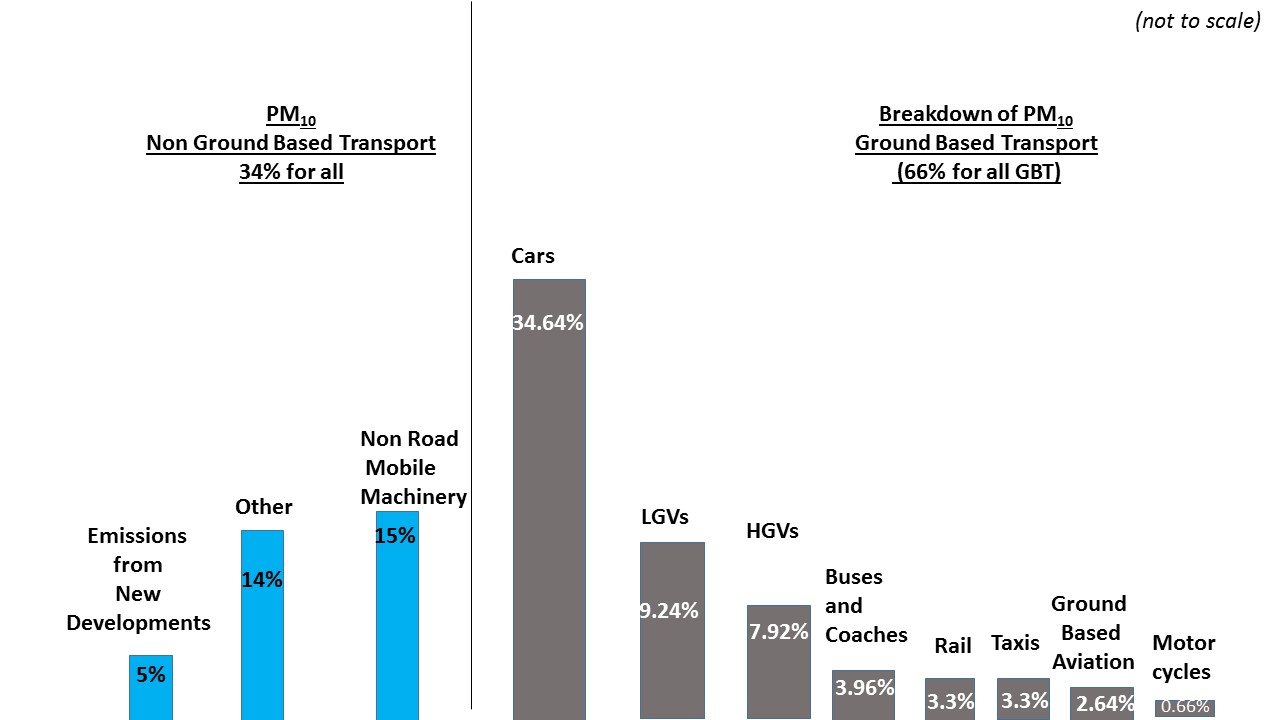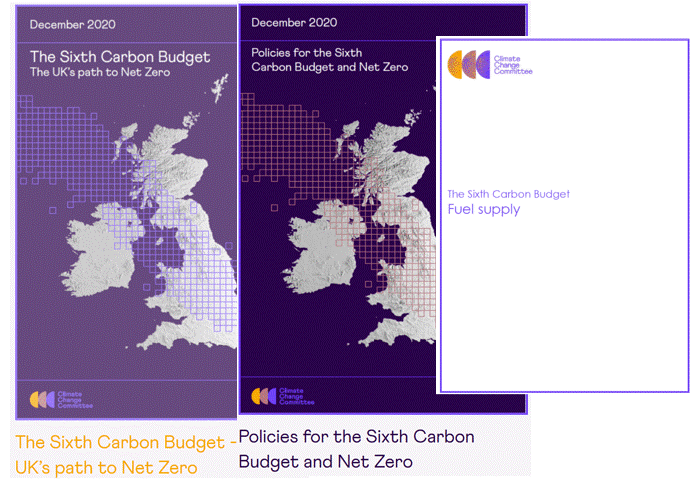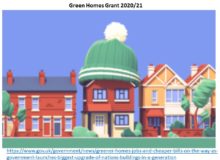“Ambient (outdoor air pollution) in both cities and rural areas was estimated to cause 3.7 million premature deaths worldwide in 2012”, according to a World Health Organization factsheet Ambient (outdoor) air quality and health published in 2014. In the UK alone the Royal College of Physicians estimated in ‘Every Breathe we Take” that “around 40,000 deaths are attributable to exposure to outdoor air pollution” and in the UK “these costs add up to more than £20 billion every year”.
WHO then related the solving of air pollution to the solving of CO2 problems “Reducing outdoor air pollution also reduces emissions of CO2 and short-lived climate pollutants such as black carbon particles and methane, thus contributing to the near- and long-term mitigation of climate change.” The pollution is not confined to road pollution in wealthy cities. See Indonesia Burning for corporate sabotage of a natural environment.
The technology exists to prioritise clean air, and introducing these will be key to fulfilling the promises of the International Paris Agreement in Dec 2015 ”Also recognizing that deep reductions in global emissions will be required in order to achieve the ultimate objective of the Convention and emphasizing the need for urgency in addressing climate change.”
European Governance
“Over 90% of citizens in the Region are exposed to annual levels of outdoor fine particulate matter that are above WHO’s air quality guidelines. This accounted for 482 000 premature deaths in 2012 from heart and respiratory diseases, blood vessel conditions and strokes, and lung cancer.” according to a study of deaths and diseases in the European region from the WHO Regional Office for Europe and the Organisation for Economic Co-operation and Development (OECD) published in April 2015
The EU responsibilities include the regulation of the sources of polluting emissions well as the regulation of the resultant Air Pollution levels. Directive 2008/50/EC on ambient air quality and cleaner air for Europe covers at Article 5 1. “sulphur dioxide, nitrogen dioxide and oxides of nitrogen, particulate matter (PM10 and PM2,5), lead, benzene and carbon monoxide.”
Vehicle causes of polluting emissions
For instance the EU emission regulations for vehicles are in terms of ‘Euro 5’ and ‘Euro 6’. “Euro 5 will enter into force in September 2009. The main effect of Euro 5 is to reduce the emission of particulate matter from diesel cars from 25mg/km to 5mg/km. Euro 6 is scheduled to enter into force in January 2014 and will mainly reduce the emissions of NOx from diesel cars further, from 180mg/km to 80mg/km.”
However, in Oct 2015, when the EU passed the legislation to bring in Real World Driving Emission (RWED) tests for car emission tests they also raised pollutant limits so that diesel cars would not fail and become unsaleable.
Transport Environment reported on this. They campaign to be “focused on the areas where European and global policies have the potential to achieve the greatest environmental benefits. These include transport pricing so that polluters, not society, pay for pollution, setting standards for the cleanest possible cars, vans, lorries, ships, planes, and fuels, and greening EU investment in transport.”
Resultant Levels of Pollution
The Pollutants in Air Quality Directive 2008 and EU Air Quality Standards details the limits per pollutant at a measuring site – for instance, over a year, limits include:
NO2 at 40µg/m3
PM10 at 40µg/m3
PM2.5 at 25 µg/m3.
There are no margins for allowable excesses for the EU limits. See the UK section for legal action on exceeding the limits.
UK Government
Officially 29,000 people in the UK die prematurely each year due to PM2.5 particulate matter pollution in the UK each year ”but this figure does not include deaths caused by nitrogen dioxide which is more complicated to calculate and also to separate from the effects of PM2.5.” according to Air Quality News in Dec 2014. According the Royal College of Surgeons “Each year in the UK, around 40,000 deaths are attributable to exposure to outdoor air pollution.”
The Department for Environment Food and Rural Affairs (Defra) manages air quality in the UK. It is responsible for the monitoring aspects in the UK and for reporting to EU on progress with meeting the European limits. Defra is discharges the local aspects via obligations on the Local Authorities under “Part IV of the Environment Act 1995 and Part II of the Environment (Northern Ireland) Order 2002 requires local authorities in the UK to review air quality in their area and designate air quality management areas if improvements are necessary. Where an air quality management area is designated, local authorities are also required to work towards the Strategy’s objectives prescribed in regulations for that purpose. An air quality action plan describing the pollution reduction measures must then be put in place.”
Defra published EMISSIONS OF AIR POLLUTANTS IN THE UK, 1970 TO 2015 in Dec 2016. Defra also commissions the Committee on the Medical Effects of Air Pollutants (COMEAP) to research the health and mortality outcomes. COMEAP published “Estimating local mortality burdens associated with particulate air pollution” in April 2014. They subsquently issued a statement in Dec 2015 saying that they are investigating how to include NO2 deaths in their next report due in 2016.
To view the list of DEFRA London Automatic Air Monitoring Sites click here. Also the Air Quality England website that includes Ricardo Energy and Environment data sets for 18 sites.
For Defra’s daily air forecasts click here.
For Defra’s London Borough’s Air Quality Management Areas (AQMA) click here.
For a Real Time view of London Air Quality click here.
UK Breaches of EU Limits
Ever since 2011 the UK has breached the EU legally binding limits for NO2 and Client Earth has been pursuing legal action against the UK’s Defra Secretary of State. The charge was for “breach of its duty to achieve legally-binding limits for nitrogen dioxide by the 2010 deadline and had failed to apply to the European Commission for a time extension by preparing plans to achieve limits by an extended deadline of 2015.” This concerned air pollution in “Greater London, the West Midlands, Greater Manchester, West Yorkshire, Teesside, the Potteries, Hull, Southampton, Glasgow, the east, the south-east, the east Midlands, Merseyside, Yorkshire & Humberside, the west Midlands, and the north-east.”
By Feb 2014 the EU Commission also took the UK Government to court with potential fines of up to £300m and in April 2015 Client Earth received a judgement from the Supreme Court that “means the Government must start work on a comprehensive plan to meet pollution limits as soon as possible. Among the measures that it must consider are low emission zones, congestion charging and other economic incentives.”
In response Defra published Summary of responses to the government’s consultation on draft air quality plans in Jan 2016 setting the intention to consult on ‘Clean Air Zones’ by 2020. and submitted its plan to the EU in Dec 2015. This plan is to consult on setting up Clean Air Zones in 5 cities around 2020 and conduct scoping studies (they said that 6 cities were projected to be over the limits by 2020 but London has special independence).
On 1st March 2016 Client Earth sent a final legal warning to the UK government which gave Defra 10 days to act on air pollution or face action in the High Court “because Defra’s plans to tackle illegal levels of pollution fall woefully short of what was ordered by the court.”
On 18th March 2016 Client Earth lodged papers at the High Court in London seeking judicial review “As the government can’t be trusted to deal with toxic air pollution, we are asking the court to supervise it and make sure it is taking action.”
On 2nd Nov 2016 the High Court found in favour of Client Earth. “Mr Justice Garnham agreed with ClientEarth that the Environment Secretary had failed to take measures that would bring the UK into compliance with the law “as soon as possible” and said that ministers knew that over optimistic pollution modelling was being used.”
“Defra’s planned 2020 compliance for some cities, and 2025 for London, had been chosen because that was the date when ministers thought they’d face European Commission fines, not which they considered “as soon as possible.””
Lord Gardiner of Kimble gave Defra’s response to the Lords on 3rd Nov (at 15.08) confirmed that the Government was aiming at doing as little as possible to try to be legal, that Clean Air Zones in 20 Cities had been discounted on cost grounds and that the Government expected that Local Authorities, whilst charged with monitoring and reporting NO2, were somehow expected to solve the problem caused by increasing diesel vehicles.
He also mentioned the issue of EU limits for diesel emissions causing health problems, but did not mention that the UK had voted to relax EU NO2 limits when testing changes to ‘Real World’ testing. In Oct 2015 the EU passed the legislation to bring in Real World Driving Emission (RWED) tests for car emission tests. But, as Air Quality News reported the limits for nitrogen oxide (NOx) emissions for diesels would be temporarily raised.
Further Delays – 10th Nov 2016
The Guardian reported that the Government failed to submit a plan that would bring the UK into compliance with the law “as soon as possible” and this will return to the Courts.
“We are disappointed that we have been unable so far to agree on the timetable for the new plan, or on the future role for the court in overseeing compliance with the order,” said ClientEarth lawyer Alan Andrews. “We have made our written submissions and await the court’s decision.”
Update 21st Nov 2016: – The High Court gives Defra until 24th April 2017 to produce a draft plan and a final, agreed, plan by 31st July 2017. Client Earth has the right to inspect the data, particularly the assumptions as to whether levels were based on Lab testing or Real Driving test conditions.
Client Earth seeks further funding to pursue the case. They can be supported at: https://cafdonate.cafonline.org/688
Mayor of London’s action against false emissions standards
Sadiq Khan demanded compensation in Nov 2016 for loss of Congestion Charge receipts from Volkwagon of £2.5m ” from vehicles that were not known to be contributing to the capital’s pollution levels” and also compensation for car owners who were misled. The Mayor would use the money “to fund a new schools air quality programme.“
London's Air
“A recent report commissioned by the Greater London Authority found that there are approximately 9,400 premature deaths from exposure to particulate matter and NO2 in London. This includes a significant proportion caused by PM2.5 from sources outside of London, but nonetheless highlights the importance of reducing air pollution to protect the health and wellbeing of Londoners.” Source; para 5.01 of draft London Local Air Quality Management Policy Guidance 2016 (LLAQM.PG (16))
Undoubtedly the deaths from exposure arose from different causes at different locations, so understanding the dangerous levels and causes along main roads, outside schools, near railway tracks and runways is the first step to insisting on London wide solutions.
Sources of Pollution in London
Bloomberg reported on Jan 8th 2016 “London failed annual European Union limits on air pollution just eight days into 2016, data from the capital’s main air quality monitor show.” According to The Guardian in Feb 2016 “London has the highest levels of NO2 of any European capital city” and “London has insisted that it could not meet its NO2 targets set in 1999 until 2025 at the earliest.” This is despite the Current London Plan Policy 7.14 Improving air quality saying that the “Mayor is committed to working towards meeting the EU limit values of fine particulate matter (PM10) by 2011 and nitrogen dioxide (NO2 ) by 2015.”
Clean Air for London contains raw data on the sources of emissions in the Greater London Area, and Camden has summarised these succinctly in its draft Camden Clean Air Action Plan 2016-18 Draft Action Plan for public consultation February 2016 (p10).

Although these figures do not include PM2.5 or NOx it is clear that the major culprits in descending order are
- Construction (Non Road Mobile Machinery)
- Part B emissions from new developments
- Cars
- ‘Other’
- LGVs
- HGVs
- Buses and Coaches
- Taxis
Note that this is only an average across London. Roads near Heathrow will have a higher percentage of Ground based Aviation pollution, and roads near the HS2 construction site will have much high construction pollution. A specific local cause of pollution that is threatened is that of a cruise liner terminal at Enderby Wharf (North) at Greenwich. East Greenwich residents obtained a Judicial Review in April 2016 saying power should be provided dockside rather than from polluting diesel engines, and that Greenwich Council the Council had not conducted the environmental assessment correctly in granting permission.
“There are 187 Air Quality Focus Areas in the Capital. These are locations that not only exceed the EU annual mean limit value for NO2 but are also locations with high human exposure.” The Data Store here also has a spreadsheet listing the hot spots and a map.
The Mayor of London offers a Mayors Air Quality Funding (MAQF2 for 2nd round) over 3 years from April 2016 with £2million for Low Emission Neighbourhoods (LENs) and £6 million for all other standard projects.
London Governance
Supervision of the Local Air Quality Management (LAQM) “system in Greater London has been devolved to the Mayor of London, to whom powers to intervene and direct boroughs have been given under Part IV of the Environment Act 1995. The Secretary of State expects London boroughs to participate in the Mayor’s London LAQM framework and have regard to any advice or guidance issued by the Mayor of London as to the performance of their functions under LAQM” (from para 5.01 of draft London Local Air Quality Management Policy Guidance 2016 (LLAQM.PG (16))
Requirements for boroughs under LLAQM
(summarised from 2.10 of draft London Local Air Quality Management Policy Guidance 2016 (LLAQM.PG (16))
- to monitor and assess air pollution in their areas
- to ensure an Air Quality Management Area (AQMA) is declared and in place for any locations that are exceeding air quality objectives and EU Limit Values.
- to complete an Annual Status Report (ASRs) including reports on NO2, PM10and SO2
- to produce an Air Quality Action Plan (AQAP) for the exercise of any of the borough’s relevant potential powers to achieve air quality standards and objectives including statements as to when the borough proposes to implement each of the proposed measures.
- How the borough will address the ‘exceedance problem’ and how it will work across its transport, planning and public health departments, and its other external delivery partners to implement the AQAP
Role of Transport for London (TfL)
Transport for London has some responsibility for:
Roads – TfL are responsible for the Red Routes, which are likely to be the most highly polluted of London’s roads.
Buses – TfL award contracts for buses – to be managed by London Bus Services Ltd and operators who have a London Service Permit. Hybrid buses are being progressively introduced with expected reductions in “emissions of local pollutants and CO2 by 30% compared to conventional buses.” TfL have “also introduced hydrogen fuel cell single deck buses onto Route RV1, operating between Covent Garden and Tower Hill, in 2011. The only emission from these buses is water.” The Low Carbon Vehicle Partnership was involved in “producing the new Low Emission Bus (LEB) criteria, providing the basis for the recent Low Emission Bus Grant; a £30 million fund to be run over three years (2016–2019)”
Taxis – TfL is “the licensing authority for London’s taxi and private hire operations, including minicabs, executive cars and chauffeur-driven services”. The Low Carbon Vehicle Partnership reported in Oct 2015 that from “1 January 2018, all taxis licensed for the first time in London must be (ZEC) zero emission capable (less than 50g/km tailpipe CO2 and 30 miles ZE range) according to plans outlined by Transport for London. Additionally, any ZEC taxi can only use petrol for its hybrid engine. For private hire vehicles the intention is that all vehicles granted a PHV licence for the first time after 1 January 2023 must be zero emission capable, regardless of age. Although Taxis’ maximum permitted life is 15 years and Private Hire Vehicles (PHV)s is 10 years, TfL is providing £65 million to help drivers buy new greener cabs five years before their old ones are out of date, according to LowCVP.
TfL manage the London Overground, Docklands Light Railway, and Tram as well as Santander Cycles, London River Services, Victoria Coach Station and the Emirates Air Line
For a list of London’s Air Quality Management Areas (AQMA) click here.
For a list of London’s Air Quality Focus Areas click here.
For a list of London’s Continuous Monitoring Sites click here.
For a view of Londons’s daily maximum index values at monitoring sites click here.
To download a mobile App of Londons Air Quality click here.
LONDON'S POLLUTION CULPRITS
The Vehicles on London Roads. Transport for London (TFL) describes the planned Ultra Low Emission Zone (ULEZ) as “an area within which all cars, motorcycles, vans, minibuses, buses, coaches and heavy goods vehicles (HGVs) will need to meet exhaust emission standards (ULEZ standards) or pay an additional daily charge to travel.
From 2020, all cars, motorcycles, vans, minibuses, buses, coaches and heavy goods vehicles (HGVs) including buses and coaches will need to meet exhaust emission standards (ULEZ standards), or pay an additional charge, when travelling in central London. The area covered by the ULEZ is the same as the current Congestion Charge Zone (CCZ). It will operate 24 hours a day, 7 days a week.”
TfL consulted on details of the ULEZ closing in Jan 2015, with conclusions listed here.
However, prior to 2020 motorists, fleet operators, commercial concerns and Taxi drivers are still buying vehicles that will pollute prior to 2020 and unwittingly be charged more to drive around London after that.
See ‘Your Car’ for information on ‘clean’ cars, in particular about Electric Cars.
Similarly TFL will be buying new buses that may not be as clean as new technology allows. The Low Carbon Vehicle Partnership and Clean Air Alliance defines “A Low Emission Bus is defined as a vehicle which can achieve a reduction of more than 15% well-to-wheel greenhouse gas emissions compared with a Euro V diesel bus, as well as the Euro VI HD engine standard for pollutant emissions.”
Construction is a major cause of PM10. It is regulated by Local Authorities and the Mayor of London issued a supplementary planning guidance (SPG) for The Control of Dust and Emissions during Construction and Demolition in July 2014 aiming to “reduce emissions of dust, PM10 and PM2.5 from construction and demolition activities in London. It also aims to control nitrogen oxides (NOx) from these same activities by introducing an Ultra Low Emissions Zone (ULEZ) for non-road mobile machinery.”
Save Camden from HS2 says that HS2 “has no strategy whatsoever for preventing the air pollution its thousands of daily lorry movements will cause. This increase in pollution, deliberately caused by HS2 and in flagrant breach of Directive 2008/50/EC, will therefore constitute a major health threat to the people of Camden and will undoubtedly be responsible for many avoidable deaths.”
Ground Based Aviation is a minor cause of PM10 on average in London, but will be a major cause, around airports, as Aviation Justice points out: “Jet emissions affect a 25 mile area around an airport. People, children, animals and plants are toxic crop dusted by jet emissions for 12 miles from a runway end. A typical commercial airport spews hundreds of tons of toxic and criteria pollutants into our atmosphere every day. These drift over heavily populated areas and settle onto water bodies and crops.”


 Friends of the Earth
Friends of the Earth 

